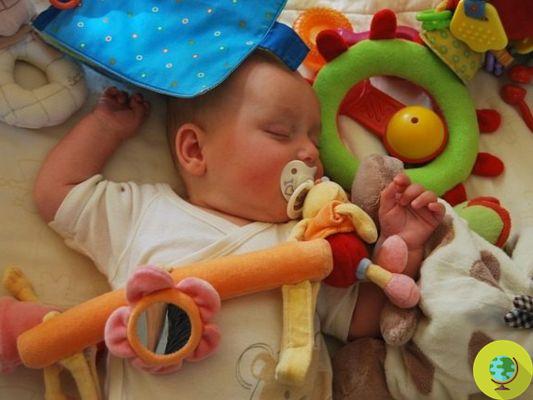
They are "new" to this planet, yet they have already lived long enough to be exposed to a lot of plastic: here are the babies and their poos
Higher concentrations of microplastics are present in children's feces than in adults', with health risks.
To say this is a new study published in Environmental Science and Technology Letters, according to which there is an average of 36 thousand nanograms of microplastics (MP) of polyethylene terephthalate (PET) per gram of infant feces, compared to 2.600 nanograms for adults (about 10 fewer times).
Microplastics are what occurs when plastic breaks down in the environment into pieces as small as five millimeters - they have been found everywhere, from Mount Everest to the ocean floor, and now the researchers wanted to test exposure in children. With shocking results.
Our study suggests that children are exposed to higher levels of PD than adults, the authors write.
A systematic review
To arrive at those numbers, researchers from the New York University School of Medicine, who collaborated with the Tianjin Key Laboratory for Environmental Remediation and Pollution Control, collected the dirty diapers of six one-year-olds. and they filtered the feces for microplastics. Three meconium samples (a child's first stool) and 10 adult stool samples were analyzed.
They tested all the samples for two types of microplastics: PET, which is used in clothing and plastic bottles, and polycarbonate (PC) plastic, an alternative to glass.
Some of the meconium samples had up to 12 nanograms per gram of PET and 110 nanograms per gram of PC plastic, the study authors wrote. However, microplastics were found in all infant samples, averaging 36 nanograms per gram for PET and 78 nanograms per gram for polycarbonate. Most of the adult stool samples had PET and all had PC, but at much lower concentrations than the children's stool samples.
The researchers were then able to use their data to estimate the average daily exposure to microplastics in the diets of both adults and children and calculated that children are exposed to 83 nanograms of PET per kilogram of body weight and 860 nanograms of PC per kilogram of body weight. The adults, on the other hand, were exposed to 5.800 nanograms of PET and 200 nanograms of PC.
If we want, in a sense, this shouldn't even surprise us that much, if we consider that, for example, microplastics have even been in the human placenta.
Babies also have a tendency to wear toys or clothing that may contain microplastic fibers in their mouths. In addition, baby food is often wrapped in plastic and many baby utensils, such as shot glasses, are made of plastic. The interior is also full of plastics from carpet and dust.
Unfortunately, with the modern lifestyle, children are exposed to so many different things that we don't know what kind of effect they might have later in their life, says study co-author Kurunthachalam Kannan.
At this time, scientists are still not sure what the impact of ingesting microplastics is on humans. The main concern is the chemicals contained in microplastics themselves, which can be part of their production or adhere to them in the environment. One class of concern is endocrine-disrupting chemicals that can impact reproductive, metabolic, and neurological health. This is a big problem for children because their endocrine systems are still developing.
I strongly believe these chemicals affect the early stages of life, Kannan said.
So what to do? Very little, other than being super careful with our babies and following a few simple steps, for example:
- do not heat the formula in a plastic bottle, but in a glass bottle
- vacuum and sweep frequently around the house to remove microplastics from the floor
- avoid plastic wrapping and containers
- choose suitable games
Fonte: Environmental Science and Technology Letters
Read also:
- Air pollution can reach the fetus: the black carbon particles manage to cross the placenta
- Microplastics have also reached human organs
- Water, beer and salt: the list of foods with the most microplastics
- Microplastics are now truly everywhere: new studies reveal the terrible contamination


























